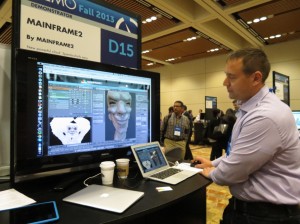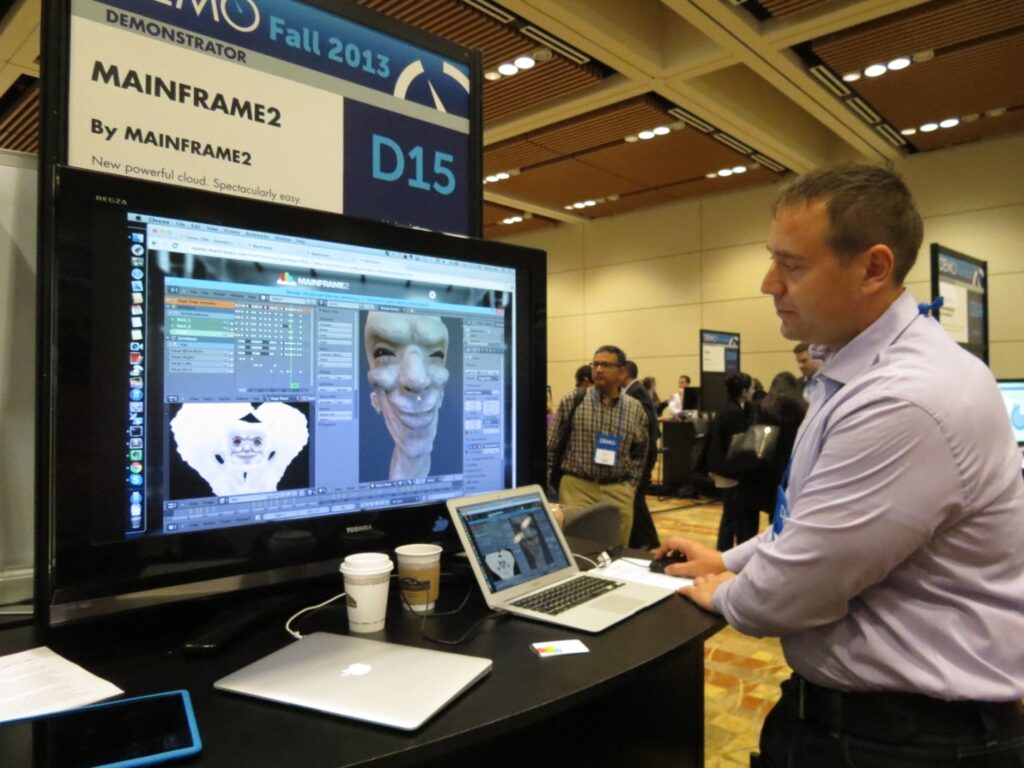Now that Microsoft is on board with OpenGL, the browser as software platform can really take off.
Siggraph represented a major milestone for the Khronos organization, and this year is an especially momentous one for the organization.
Graphics standards organization Khronos Group always takes time at Siggraph to show off what it has accomplished in the past year, and to update its roadmap. This year was especially momentous for Khronos, which manages graphics APIs for mobile, PC, and lots of stuff in between. It has seen WebGL gain wide acceptance, WebGL ES has hit several major goals, and the venerable WebGL organization has committed to a massive revamp of the standard to take advantage of modern architectures and streamline for the future.

Several Siggraph exhibitors and attendees said WebGL was the big story of the conference. WebGL has been gaining strength for a few years now, and there have been significant software breakthroughs as a result of WebGL such as Mainframe2, which makes applications available in the browser or Clara.io, Lagoa, and Autodesk’s Fusion 360 and AutoCAD 360.
The advance of WebGL has been steady, but it had some significant opposition … Microsoft, which displayed little interest in supporting WebGL in its browser Internet Explorer and, worse, promoted the idea that WebGL was insecure and somehow unsound. This summer, though, all that changed when Microsoft joined Khronos and the WebGL working group.
Neil Trevett celebrated the event with a tweet welcoming “@FrankOliver and his team” to the Khronos WebGL working group. At the Khronos BoF (Birds of a Feather) at Siggraph, an often-weighty affair bearable only because of the honest soul searching from the podium and the promise of beer later, Microsoft was gracious and eager to get to work. Now, the WebGL working group can say they have all mainstream browsers supporting WebGL including Chrome, Firefox, Safari, and Internet Explorer.

Another huge driver is Unity’s plan to support WebGL with Unity 5. Supported features will include runtime generation of Substance textures, Movie Textures, support for webcam and microphone access, hardware cursor support, threads, etc.
The show floor saw quite a few people ready to stake their futures on the future of WebGL. Marc Petit, formerly Autodesk’s chief of M&E, is now an investor backing WebGL companies and said this is the end of apps as we know them because applications will run in the browser. What he didn’t say but what we were thinking is, just as apps have redefined software applications—making some large, heavy apps seem archaic compared to direct, pleasant little mobile apps—WebGL is going to further change the world of PC software and increasingly shift capabilities to the web. At least that’s what a lot of people are banking on and why there was considerable jubilation at the Khronos BoF.
OpenGL ES 3.1
This year the presenters at Khronos admitted that the group has to figure out ways to iterate faster on the APIs, but there was palpable relief that the major vendors have transitioned to OpenGL ES 3.1. ARM, Imagination, Intel, Nvidia, and Vivante have full conformance, and Qualcomm is currently under review. End users aren’t going to see the effects immediately, but new OpenGL ES devices will be coming soon.
Google announced the new version of Android, Android L, will use OpenGL ES 3.1 with the Android Extension Pack (AEP). The AEP will bring improved graphics to the Android platform and further close the gap between graphics on the desktop and graphics on mobile devices. OpenGL ES 3.1 with AEP will enable global illumination, physically based shading, deferred rendering, HDR tone mapping, smoke, and particle maps. Games and applications will be able to take advantage of tessellation, geometry shaders, and also ASTC texture compression.
OpenGL, the next generation
Proving that they are truly unafraid of anything, the OpenGL group has committed to completely revamping OpenGL and OpenGL ES, merging them and creating a fast, efficient API for 3D graphics. But first, the group said they’ve brought OpenGL up to date with version 4.5, which will be more efficient and flexible as a result and it will be a better platform for WebGL, says OpenGL chair Barthold Lichtenbelt. To better bring OpenGL and Direct X inline, they’ve added DirectX emulation.
And OpenGL and OpenGL ES have been further rationalized with OpenGL ES 3.1 API and shader compatibility. Now desktop OpenGL is to be used for mobile development. OpenGL 4.5 has an OpenGL ES 3.1 context.
All of which leads up to OpenGL’s great leap forward. OpenGL and OpenGL ES had already been trying to better integrate their APIs, and in the process they’ve come to recognize that there needs to be a complete redesign of OpenGL to conform to modern architectures, which rely on GPUs.
They’ll support multi-threading, which OpenGL ES chair Tom Olson says turned out to be relatively easy. They’ve already knocked that out. The new API will enable explicit application control over GPU and CPU workloads. After years of dealing with growing APIs, the plan now calls for streamlining the APIs and reducing overhead. They’ll bring the shading languages together to improve reliability and portability and enable better utilization by machine generated shaders and high-level languages. Programmers will be able to use a common compiler front end across multiple platforms.
At the Khronos BoF people repeatedly said, “We have to bite the bullet.” If you’ll remember your cowboy movies, biting a bullet comes right before an arm or a leg gets sawed off by a hard-drinking doc. This sounds like it might be sort of the same thing. “Next gen is an attempt to keep the best of OpenGL and get rid of the rest,” said Olson. Anyone who has followed the long, tortured history of OpenGL knows this day needed to come, but it’s also going to be a difficult transition. But from OpenGL, Khronos will maintain OpenGL so that those venerable old apps that need it will have it. However, as the broad acceptance of OpenGL ES has demonstrated, if NextGen gives people what they need, it will find fairly rapid adoption.
The OpenGL and OpenGL ES chairs said they’re getting a great deal of support for their plans from the industry including Sony, Apple, Nvidia, Qualcomm, MediaTek, Samsung, Imagination, ARM, and AMD and from the high-level game developers. “I guess we can thank Apple for Metal because it showed us we cannot sit on our hands,” said Olson, who didn’t sound like he had actually sent any thank-you notes Apple’s way.
They’re intentionally not providing a timeline yet. Olson told us that creating a realistic timeline will be one of the first things the working group does as it gets cracking on revamping OpenGL, but he said they are all determined to break the pattern of increasingly long development cycles for the APIs as they become bigger and more encompassing.






